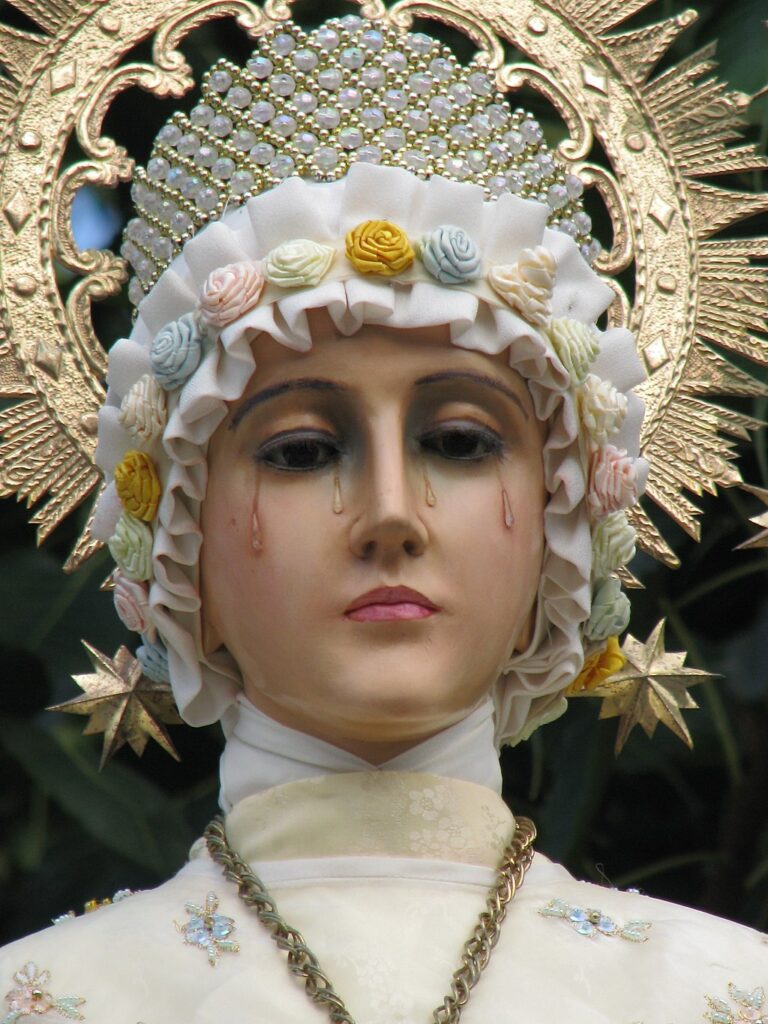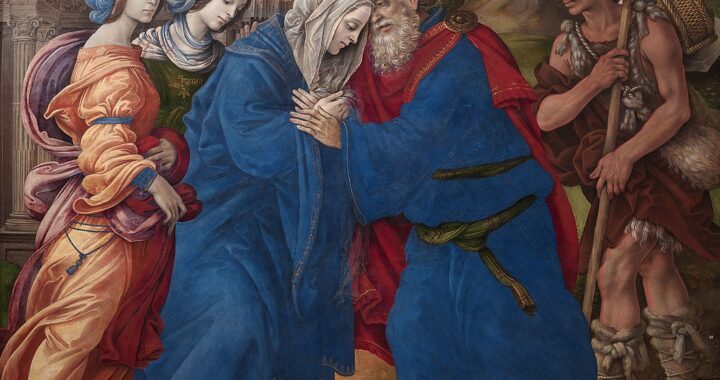
May is the traditional month that Catholics particularly remember the Blessed Virgin Mary, but there are several lesser-known feasts associated with Mary in September that deserve our attention too. After all, these feasts teach us about God’s love for Mary and, by extension, for every Christian.
On September 8, the Church celebrates the nativity of Mary. Obviously, Mary’s birth (and the date on which it occurred) are not recorded in Scripture. Some apocryphal gospels—that is, early writings that relate stories about Jesus Christ but which were eventually excluded from the Bible—describe events surrounding the birth of Mary. Although the Church rejected these writings, those works indirectly pointed out the fact that Mary had a birthday, just like every other human descendant of Adam and Eve. Perhaps that is the reason that her birthday was celebrated in various areas for centuries until the pope himself added a litany and procession to its celebration in the Church in the late seventh century. The reason behind September 8 being chosen as the date is lost in time, but the practice of celebrating Mary’s birthday on the date of September 8 is very ancient.
On September 12, the Church calendar asks us to remember the Most Holy Name of Mary. Although this memorial was not added to the calendar until 1683 after a great battle in which Catholic forces were victorious, the idea of calling upon Mary’s name in time of need is not a new concept. After all, her name is the second word of a prayer that faithful Catholics recite daily: Hail Mary.
On September 15, the Church celebrates a memorial in Mary’s honor, under the title of Our Lady of Sorrows. The reason behind this date is rooted in an historical event. Some time after Saint Helena, the mother of the Roman emperor Constantine the Great, discovered the relics of the True Cross in Jerusalem, two churches were built there: one on Calvary and one at the site of the Holy Sepulchre. These churches were dedicated on September 14. Just as the Church eventually decided that it made sense to universally commemorate Jesus’ triumph on the Cross on September 14, so it made sense to remember the woman who stood faithfully at the foot of that Cross on September 15.
There are two other notable feast days of the Blessed Mother in September, although they are not celebrated in the universal calendar of the Church. But both are related to Marian apparitions that have been approved by the Church.
On September 19, 1846, two French children were walking on a mountain when they encountered a weeping woman. From her words and appearance, they eventually recognized this woman as the Blessed Mother. In this apparition, which was eventually approved by the Church, Mary wept over the faithlessness of the people of France, who were notably failing to observe the Ten Commandments. She begged the children to tell French Catholics to observe Sunday as a day of rest, stop using the Lord’s name in vain, and repent of other sins. There are signs that the French people obeyed the instructions of Our Lady of La Salette, as she came to be called, and averted the punishments of God that she warned would otherwise result.
On September 24, probably in 1218 (the exact year is debated), our Blessed Mother appeared to Saint Peter Nolasco and encouraged him to establish a religious order with a unique purpose: ransoming slaves. At the time, Christians were being captured by Muslims in Spain and on ships at sea and were being forced into lives of slavery. Saint Peter became a priest and devoted his life to the difficult vocation of raising funds from Christians and entering Muslim lands to negotiate for the release of those Christian captives. The religious order he founded became known as the Mercedarians, and it was placed under the patronage of Mary under the title of Our Lady of Ransom.
What do these feasts teach us about the Mother of God? They remind us that Mary was just a human being, like every one of us, with a birthday and a date of death. They remind us that God knows her by name—as did the angel Gabriel, who greeted her and related God’s invitation for her to become the Mother of God—just as He knows us by name. These feasts remind us of Mary’s readiness to suffer and stay close to her Son, even in His blackest moments, as we do particularly every Lent and Good Friday. And they remind us that God in Heaven cares about our sins and our sufferings and is ready to send the Blessed Virgin Mary to encourage us or correct us when we need help, just as any good mother would do.
